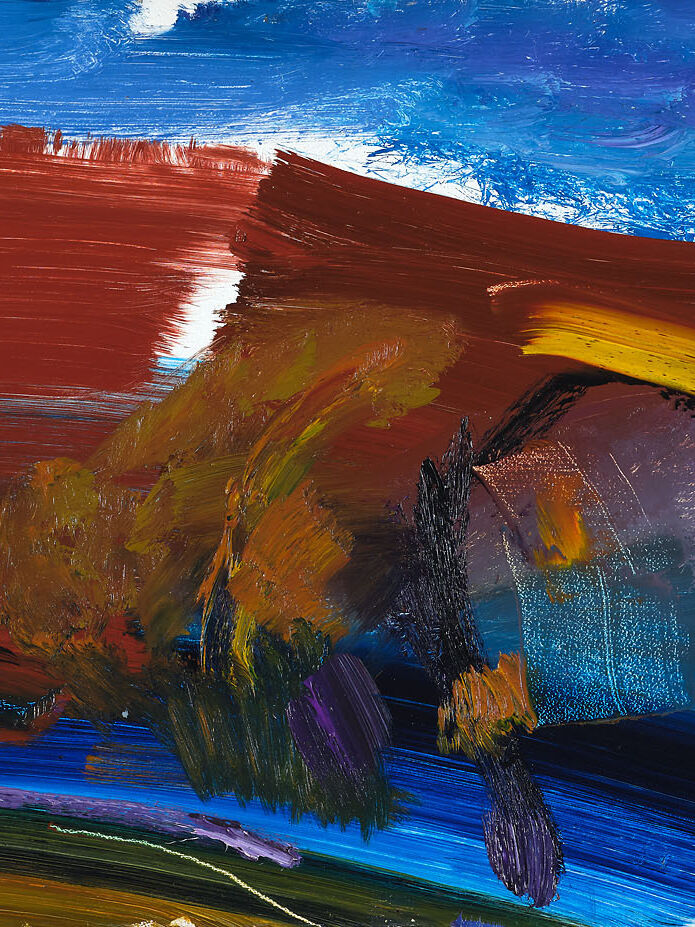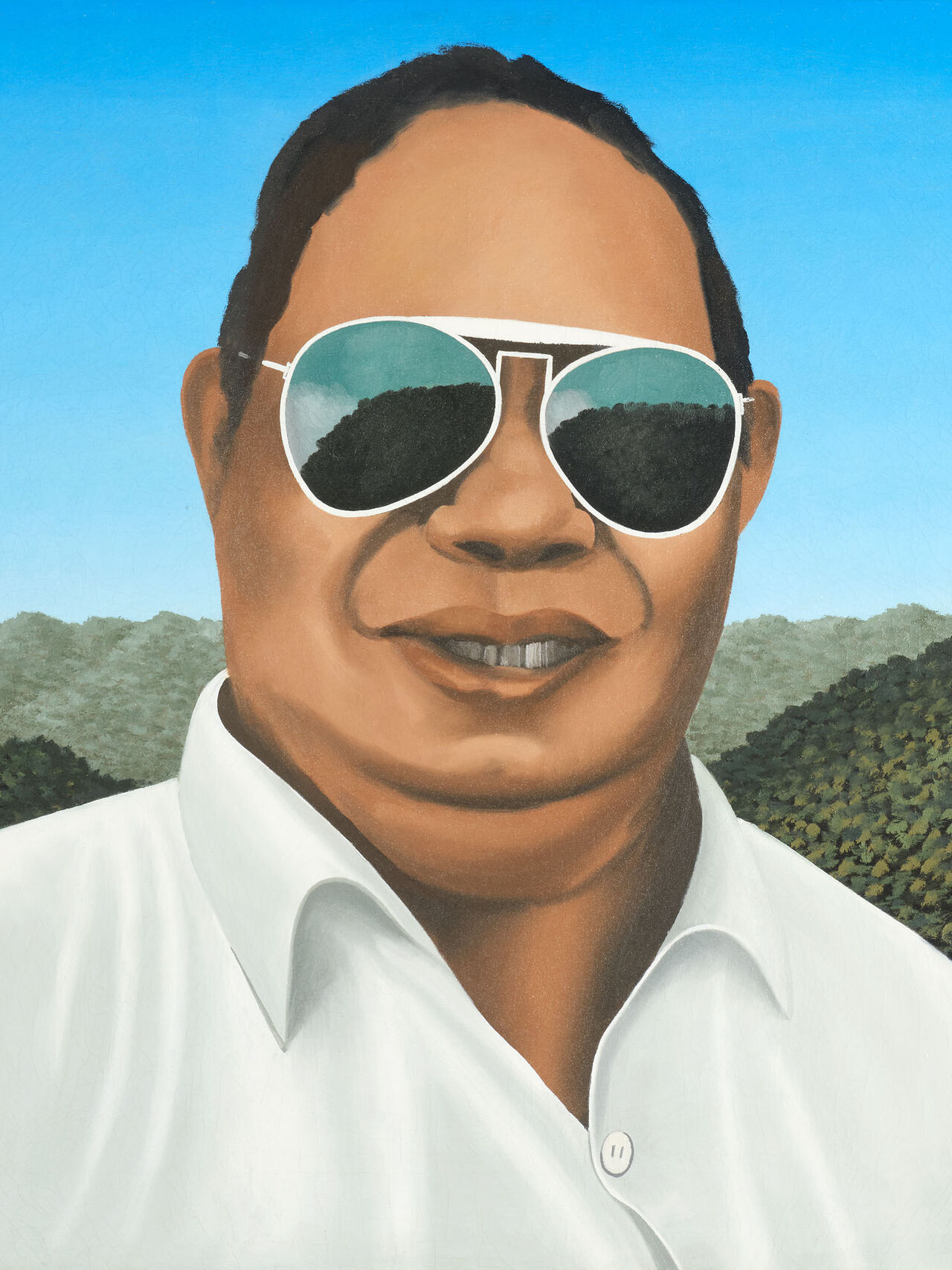Richard Killeen 'The Politics of Difference'
Martin Edmond
Essays
Posted on 29 May 2025
In 1976 Richard Killeen won the Benson & Hedges Art Award for Frogshooter, a painting in which images of aquatic and amphibious animals are concealed within a grid constructed using a saw-toothed comb motif. I remember seeing it at the Peter McLeavey gallery in Wellington and enjoying the search I had been invited to make through the interstices of the grid for the imagery hidden therein. Two years later, Killeen abandoned the grid altogether, released his creatures and started making works in which images, cut out and painted, stood alone in wallbased assemblages whose order was flexible and could be determined by the owner or the exhibitor; and, in at least one case, at the Auckland City Art Gallery in 1982, by members of the public. It was a breakthrough which has sustained him for the rest of his career.
As Neil Rowe remarked at the time, these works feature ‘logo-like, pictographic shapes, which swarm silhouetted over the wall in an infinite variety of pictorial arrangements.’ Last year Peter James Smith reiterated: ‘these shadowy shapes are essentially pictograms.’ Killeen himself said he banished the grid out of ‘discontent with the compression caused by the four static points of the frame.’ The consequent freeing of his imagery (‘off-stretcher presentation’) gave him a multitude of motifs, including invented shapes, to play with, in a wealth of potential arrangements. In effect, they are glyphs which may be re-ordered to write any number of sentences and paragraphs.

The Politics of Difference (1984) is an early example of the works generated by this method. There are fifteen discreet, often portmanteau, motifs in the painting. Some are figurative — a flamingo, two fish, a dog, a fly (and its reflection), a goat-like creature, albeit with a foot protruding from its back, the façade of a building — while others, if not exactly abstract, seem to hover upon some equivocal line between the abstract and the figurative. All are colourful and all may be seen as provocations, not just towards sense but towards inquiry. They are enigmatic but not necessarily inscrutable: witness the façade of the building at the bottom of the current arrangement, with the words ‘Australian Pensioners League’ written above the lintel of the door.
Australians nationwide were granted the pension in 1908; the League came into being between the wars to lobby government about anomalies and injustices in the system. It was a voluntary organisation with benefits for fee-paying members, including a funeral fund. Quite what the image is doing in a Killeen painting is a moot point; but it might be taken as one of the points of reference for the title. Or not. Belgian surrealist René Magritte was in the habit, after he finished a painting, of calling in his friends and colleagues to consult upon what he might call it. I don’t imagine Killeen does this but his titles are, like Magritte’s, frequently oblique if not actually obscure. Alternatively, in the words of Marcel Duchamp, ‘a title is just another colour added to the painting’.
Killeen cannot be considered a true surrealist; nevertheless he has found a way of painting which uses dream-like imagery and allows multiple modes of representation, thus giving his audience the opportunity to decide for themselves how a work should look and what it might mean. You could say he is a serious painter who has made play the essence of his art; play that is witty, perceptive and with real world consequences. The Politics of Difference is an excellent example of the deft, elegant, intriguing, resonant and ultimately mysterious works he makes.


